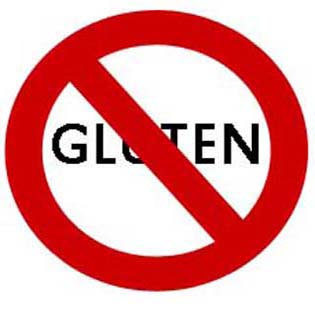I was just reading a newsletter from another gluten-free blogger who was advising her readers that if labels state, “gluten-free” you’re good to go. For many with celiac disease a tiny bit of gluten can make them seriously ill. I wanted to ensure the following information was known by all.
[showmyads]
Having heard firsthand from many celiac patients complaining of being ill despite a gluten-free; and many of those on a dairy-free diet, as well, I often wondered what the labeling laws were for gluten-free products. In the past I considered selling gluten-free products and did a little research on the subject.
United States
In 2006 the U.S. Food and Drug Administration (FDA) established labeling laws for common food allergens: milk, egg, wheat, soy, peanut, tree nuts, fish, and crustacean shellfish.
In 2007 the FDA proposed labeling laws for gluten-free products. Their proposal was to limit gluten-free products to include no more than 20 mg per kg, 20 ppm (20 parts per million). Manufacturers have until 2012 to abide by these standards. For now the standards are voluntary.
Those with celiac disease, a gluten intolerance or other gluten allergies should look for, are items such as ‘may contain’, ‘shared equipment’ and ‘within plant’. Some manufacturers are following the guidelines in the “Journal of Allergy and Clinical Immunology” and listing these warnings; others may not.
U.S. Gluten-free Certified
When products are certified gluten-free by GFCO (Gluten-free Certification Organization), it assures you that the products contain less than 10 ppm. Some people assume it is 100% gluten-free. There are no testing measurements that will measure zero. Though it appears that Australia is able to test much lower than our 10 ppm.
Australia
You will find that the gluten labeling laws in Australia are much more stringent, allowing only 0.0005 (5 parts per million). They even have the equipment to test this low degree.
Europe
On the other hand, Europe had allowed 200 ppm since 1983, but in 2008 changed the allowance to 20 ppm.
FDA
While the labeling laws have not yet gone into effect, the 2007 proposal did not include oats as part of the gluten-free labeling because many gluten intolerant individuals do not react to gluten-free oats. They wish this to serve as an initiative for manufacturers who use gluten-free oats to advertise such claims on their labels, and hope that more manufacturers will manufacture gluten-free oats.
Why 20 ppm?
The FDA’s research found that scientifically we are able to detect that degree of gluten in our foods. Obviously if Australia has this technology, I am sure we in the U.S. deserve the same. I am sure it will take many of us to get something done, but look how far we’ve already come!
Conclusion
If you have an intolerance to gluten anytime you add a new food to your diet contact the manufacturer to find out if they guarantee against cross-contamination and if what the parts per million of gluten are in their product. In addition, look for the certified gluten-free label, though a product may be certified, but not use the label. You can find a list of certified gluten-free products at Gluten-free Certification Organization (GFCO). There you can search for certified gluten-free foods by manufacturer or category.
I did, however, find one manufacture on this list that made it clear to me that a few of their products are not guaranteed against cross-contamination, yet they are on the list. Please, ensure you contact the manufactures, as this list does not guarantee all of their products are gluten-free certified.
I hope this information prevents someone from becoming ill.
To learn more about gluten-free labeling laws visit FDA’s Questions and Answers on the Gluten-free Labeling Proposal Rule (last updated 6/2009; and GFCO’s FAQs.
To learn about Canada’s new labeling regulations see New Food Allergens Labeling Laws in Canada: including gluten and sulphites



